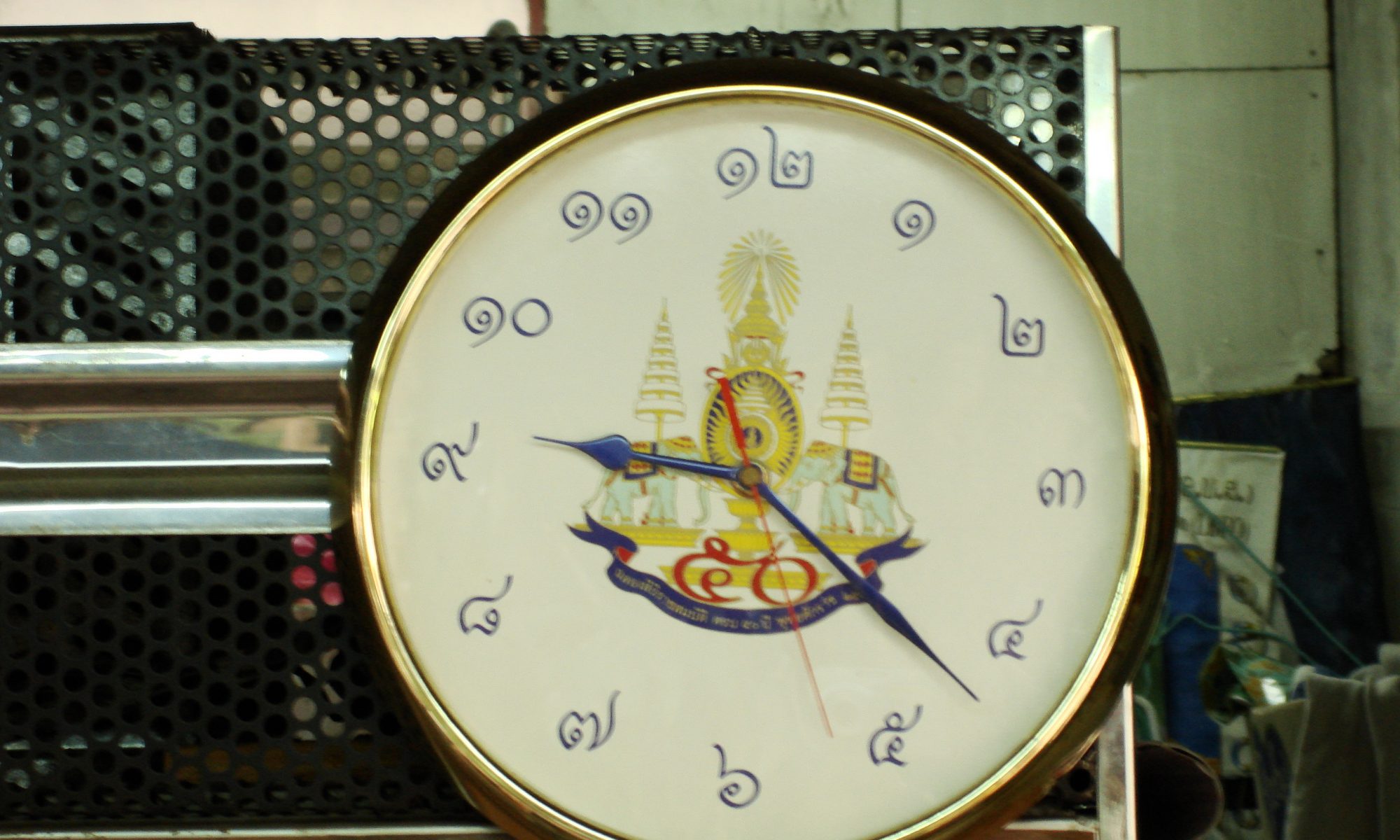It’s always awesome when seemingly unrelated interests collide. That happened for me last summer when I visited Thailand for the first time. I had brought my chessboard because I’m a huge nerd. One of my Thai co-workers told me he was a former chess champion so we decided to play a match against one another. We ended up setting the pieces up differently and after some discussion, realized we played two different versions of chess. I ended up learning the rules for Thai chess (หมากรุก: Makruk) along with some new Thai words. I also taught him the rules of International Chess and the English names of the pieces. We played each other in both versions and unsurprisingly I won in the version I knew and he won in the version he knew. Makruk is said to be the closest modern chess variant to the ancient game from which all known versions are derived (Chaturanga from 6th century India). Here are the names of the pieces in Makruk (along with their literal translation and corresponding chess piece):
เบี้ย (bia) – cowry shell – pawn
เม็ด (met) – seed – queen
โคน (khon) – nobleman or mask – bishop
ม้า (ma) – horse – knight
เรือ (ruea) – boat – rook
ขุน (khun) – lord – king
Differences between International Chess and Thai Chess:
- Pawns start on the 3rd and 6th ranks instead of the 2nd and 7th (therefore, there is no en passant and no moving forward 2 on their first move)
- The white king and queen have their starting location swapped, so black and white do not have mirrored positions at the beginning
- Pawns promote automatically when reaching the 3rd or 6th rank instead of the 1st and 8th and always become a queen (called เบี้ยหงาย [bia-ngai: overturned cowry shell] as opposed to เม็ด )
- Queens can only move to the squares diagonally adjacent to them, making them arguably the weakest pieces in the game
- Bishops move like the queens (diagonally adjacent) or to the square directly in front of them
- There is no castling
- There are a long set of counting rules similar to the 50-move rule in International Chess, you can read about them here.
You can say รุก (ruk: penetrate) instead of check and just add the word ฆาต (khat: kill) to make รุกฆาต (ruk khat: checkmate). Another fun word to use is กิน (gin: eat) when you capture a piece. For example: ม้ากินเรือ (ma gin ruea: the horse eats the boat, I bet that horse would have a bit of a ปวดท้อง [stomach ache] afterward!).
I modified a couple of javascript libraries made to implement chess to work for Makruk instead, try it out:
The libraries I modified:
- chess.js by Jeff Hlywa released under the BSD license
- chessboard.js by Chris Oakman released under MIT license (While working with this one I actually discovered a bug, fixed it and submitted a pull request which was accepted. Technically, my first open source contribution!)
Original copyrights left in the source code


